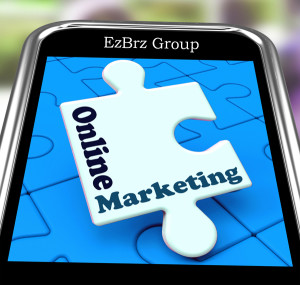 You begin with your idea on your product or service and now it’s time to get the word out. Digital marketing, a concept that you now know is not only crucial but, essential to your business marketing strategy.
You begin with your idea on your product or service and now it’s time to get the word out. Digital marketing, a concept that you now know is not only crucial but, essential to your business marketing strategy.
As you complete your digital marketing plan, which by the way should know be included in your marketing strategy, always keep in mind, not only the potential audience that you may be able to reach but after your digital campaign, you will have the analytics to measure the success, conversion rate and audience of your campaign. Nice tools to have.
Here’s a couple things to consider.
1. What’s the difference between Digital Marketing and Online Marketing?
Digital Marketing – The easy way to think about this is to say you will be marketing your brand on any technology platform, also known as electronic media. Which, may or may not include the internet or a cloud base service that connects to the internet, for display.
An example would be a digital billboard that you see on the roadways. Or maybe even a marquee in front of a resort or property that displays advertisements. Should you so choose and if the opportunity is available, your marketing effort may even display on a TV in a hotel room to a traveler or hotel guest in your area or in a designated demographic. Something like a DMR, Digital Marketing Region. Something that we can talk about later. None of these really use the internet or world wide web to display your ads. Simply, these are called stand alone systems.
Online Marketing – Oh I remember years ago when many thought I was crazy by saying “Look, we can reach thousands with this social media platform thing”. Well, look at it today. The internet is available to individuals at the palms of their hands, through any smart and or mobile device. And now, there are many ways to reach that end user, the potential customer, the desired audience, the targeted market, by using a delivery mechanism that can reach them all.
That mechanism is obviously the internet and the many platforms used to possibly reach that desired base are platforms such as Twitter, Facebook, Pinterest, Google and Bing, just to name a few. Another newer term for this, is Mobile Marketing.
2. What to consider for a digital strategy.
Building Your Plan – Don’t get lost in the digital maze. Not having a plan can be pain staking. You will bounce around different social media sites and then often forget some of the basics of reaching your potential or current customers through channels such as e-mail marketing. Yes, it still works.
You never really establish brand recognition online and you could waste your budgets on poor timing, unreliable keywords or simply not manage the analytics which can provide you much detail on what is working and what is not, in your digital marketing campaigns.
To start off, pick one platform and work your way through. Seeking advice from others who have taken the digital marketing plunge, is always fun and interesting conversation over a cup of coffee.
You’ll find the amount one spends on digital marketing to be a large variable. $10-$20 for Impressions on a social media site such as Facebook. This could get you anywhere up to 5000 looks at your ad. Not a bad branding approach. Or you could spend possibly $300-$400 a campaign to place ads on search engines to rank high in relative searches for your product or service. Therefore possibly converting those views of your ad to clicks of your ad, that lead potential customers, fans or current clients, to wherever you want to lead them to. Your website, social media site, affiliate site… wherever!
3. Measuring your digital marketing campaign.
Lastly, as your digital marketing campaign comes to an end, consider the following.
Optimize the Experience – No matter which platform, social media or marketing plan you use, keep this in mind. Optimize your efforts as much as you can by measuring your digital marketing campaigns performance.
Through analytic tools such as Google Analytics and the platforms you choose to place your ads, you can see how your campaigns perform. You can measure items such as how many hits you get a day, how long a visitor stays on your site, the ranking of key words in your campaign or site, to even the age group or gender of your visitors.
Also, depending on your hosting service, there may be free analytic tools available for you to use. One in general is called AWStats.
So if during your campaign you’re not seeing the results you would like to see, call an audible.
Review your stats, make some adjustments and compensate to some of the analytics you have. Changing up your keywords could be an example. You have full control. Here also, patience can be a virtue.
Then, when time comes to prepare and begin another exciting campaign that you have dreamed and thought of, apply some of the basics of the analytics that you have seen in your past campaigns and work them in your new digital marketing campaign.
Spend a moment, envision the plan, layout the course and then execute. You can do it!

